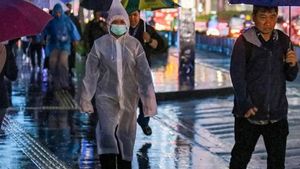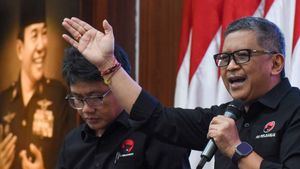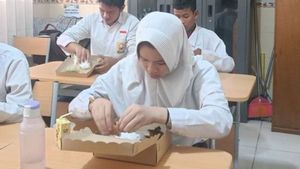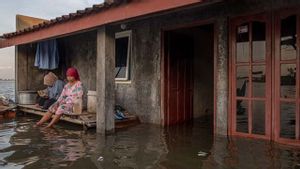JAKARTA - Spokesperson for the Task Force (Task Force) Handling COVID-19 Wiku Adisasmito said that during the long holiday at the end of October there was a decrease in COVID-19 cases. Wiku said that this was due to a decrease in the number of specimens being examined.
But currently, Wiku said there was an increase in COVID-19 cases after a long holiday. Although Wiku did not explain the data on the increase in positive cases he touched on.
"During the long holiday there was a decrease in cases, perhaps because examinations have also decreased and now, it has been about nine days since the start of the long holiday, there has been a slight increase," Wiku said in a press conference broadcast on BNPB's YouTube account, Monday, November 9.
He said, this addition is also very likely to happen more because usually, this is only known after two weeks of the long holiday. "If we see, usually the increase in cases occurs around 10 to 14 days after the long holiday," he said.
"Let's observe together what it will look like. Even if it rises until before the long holiday and is not higher, it means that the national and community's ability to work together to anticipate the increase in cases, especially on long-term holidays, has gone well," he added.
Wiku explained the number of active cases in Indonesia at this time. According to him, currently the average number of active COVID-19 cases in Indonesia is 12.59 percent. Even so, he assessed that this figure was still lower than the world average, where the difference was currently 14.27 percent or 26.79 percent.
"So this is a joint national achievement. It turns out that the community and government can jointly control cases," he said.
Likewise with cured cases. Wiku said, currently the number of recovered cases in Indonesia continues to increase. As of Monday, November 9, said Wiku, cases of recovery had reached 84.14 percent. "(The cure rate, red) the world happens to be slightly up now to 70.71 percent, so the difference is 13.4 percent. So our recovery rate is higher than global," he said.
"As for the deaths, our death cases were 3.34 percent, while in the world 2.5 percent. We are still slightly above the global, namely 0.84 percent," he concluded.
The English, Chinese, Japanese, Arabic, and French versions are automatically generated by the AI. So there may still be inaccuracies in translating, please always see Indonesian as our main language. (system supported by DigitalSiber.id)













